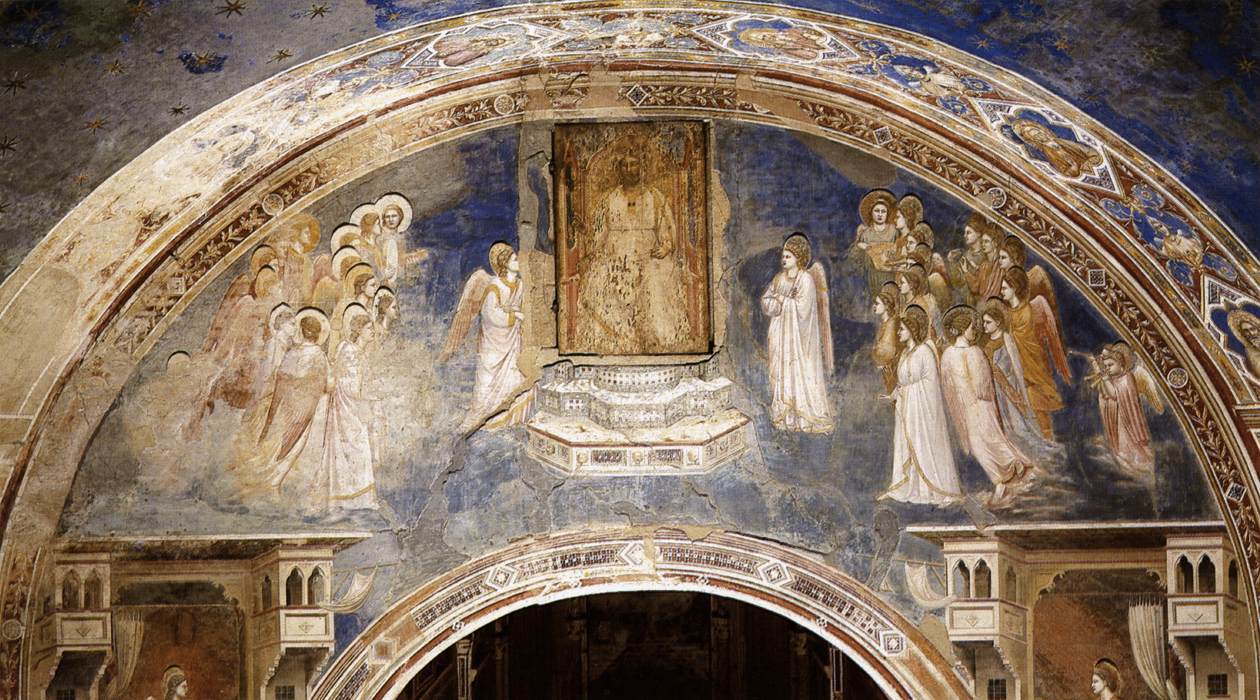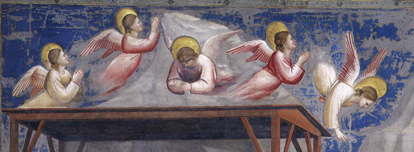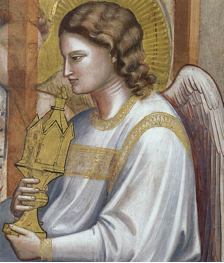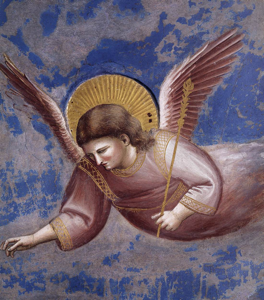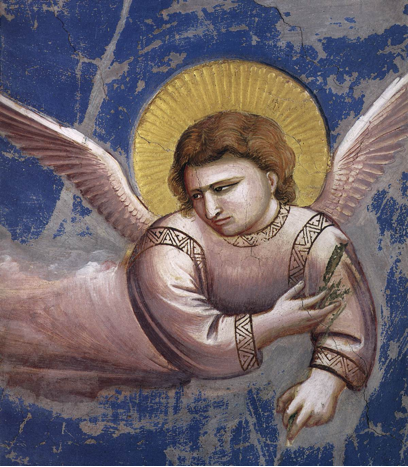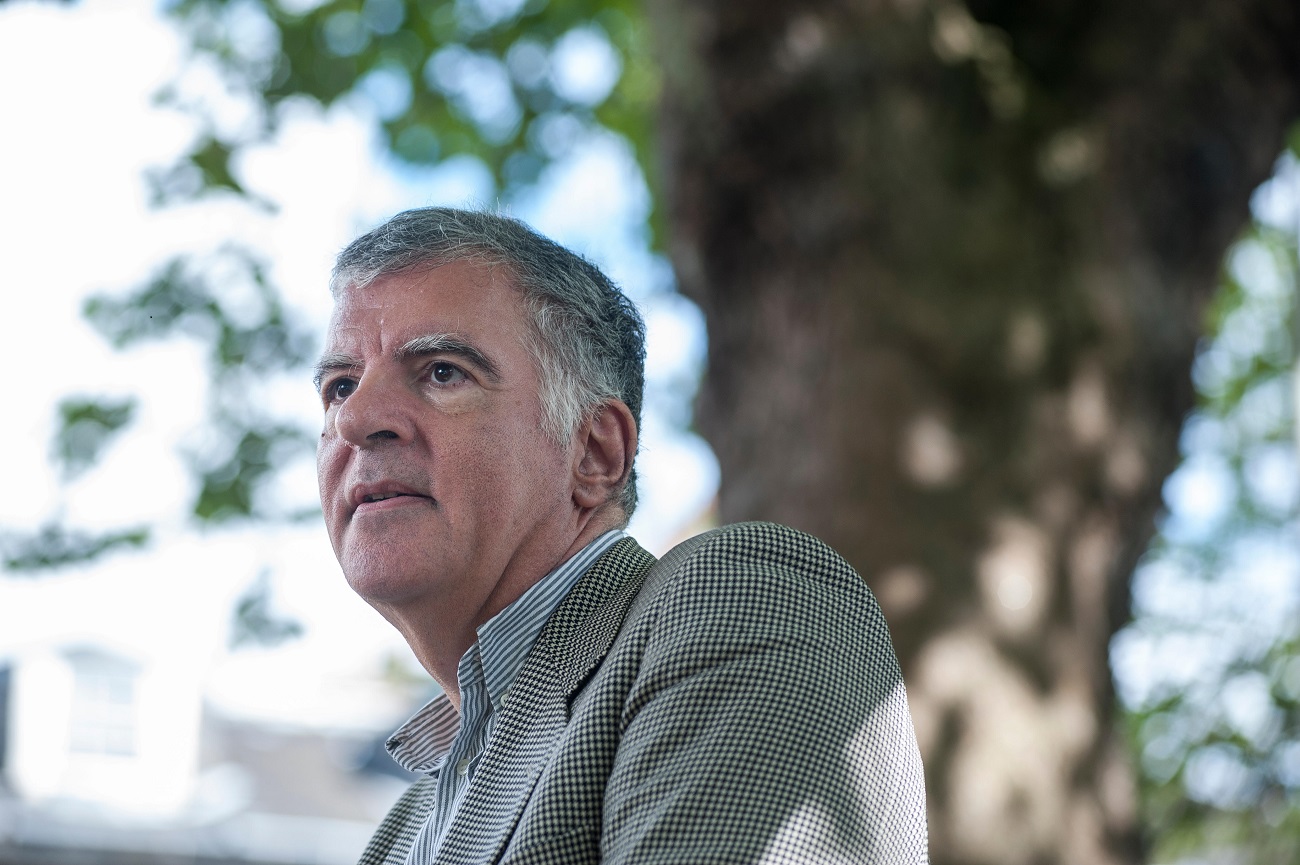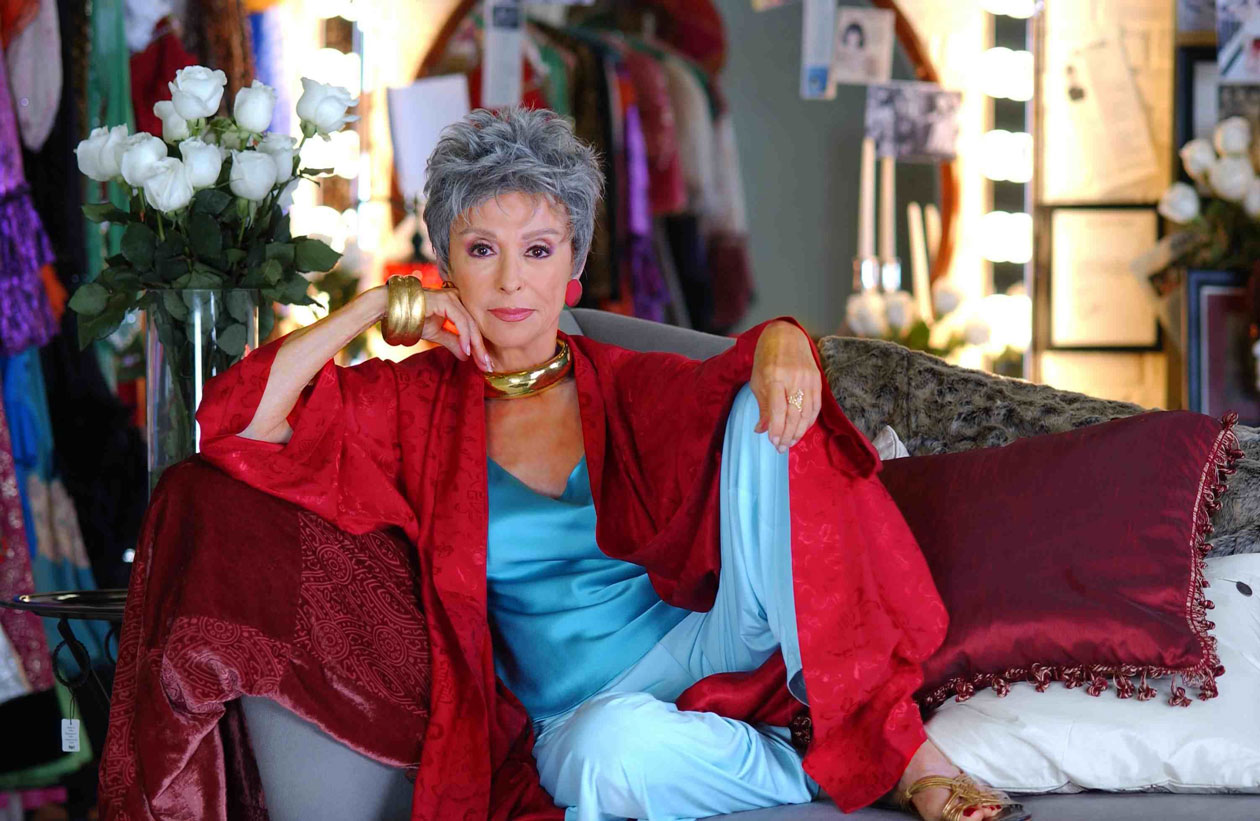
Rita Moreno, Puerto Rico’s Daughter, Still Going Strong
December 13, 2014Children and Guardians
December 24, 2014by Eliana Corbari
Last week Dantemag reflecteded on angels without wings. Today we focus on the apparently less challenging angels that adorn a family chapel in Padua, in northern Italy. There, in 1300, the wealthy banker Enrico Scrovegni built a chapel for the soul of his father, Reginaldo, and dedicated it to the Blessed Virgin Mary. Reginaldo Scrovegni is one of the usurers alluded to in Canto XVII of Dante’s Inferno, recognised by his coat of arms, the azure sow on a field of argent .It was none other than Giotto, the Florentine artist, whom Enrico commissioned to decorate his chapel.
Giotto’s frescos at the Scrovegni Chapel in Padua are, in our opinion, richer in symbolism and even more beautiful than his frescos in the Basilica of Saint Francis, at Assisi; they are a veritable visual feast from every angle, aesthetic, theological and historical. Dantemag is turning the spotlight onto them today because they are also probably less famous than the Assisi frescos.
The entire family chapel in Padua is decorated with Giotto’s amazing work. The blue ceiling is studded with biblical figures; the central arch above the altar has scenes of the Annunciation to Mary; episodes in the lives of the Virgin Mary and Jesus Christ are depicted in panels along the walls; at eye level allegories of vices and virtues oppose each other; and, above the exit, there is a fresco of the Last Judgement. The events depicted on the wall-panels are chronological, so that the story develops in linear time following the pattern of a written document, namely, from left to right and from top to bottom. The scenes from Christ’s life in the two central registers are told synchronically, so that events of the Passion of Christ (the third register from the top) illuminate panels of his life above (the second register) and vice-versa.
Today we are focusing on Giotto’s angels that figure in the birth and infancy narratives of Our Lord.
The first angels you see on entering the chapel are those on the arch above the altar; they represent the Annunciation in existence at the beginning of times.
Soon after the angel Gabriel announces to Mary she is to give birth to a son, another angel appears to Joseph, her husband to-be, and persuades him not to abandon Mary who is carrying a child that is not his. When the mysterious birth of this child actually takes place, it is a long way from home, in very poor and unsafe surroundings, and it is angels, once again, who announce the happy news to the local shepherds (Luke 2:1-20).
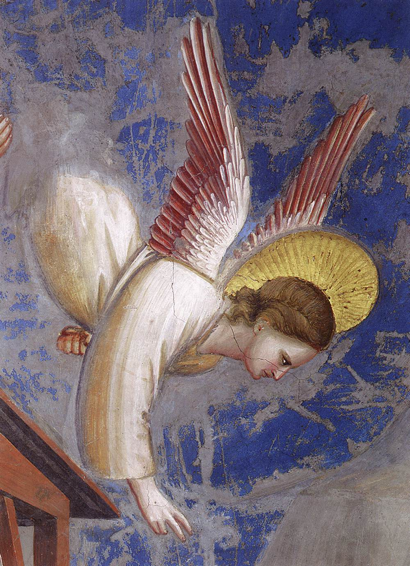
Giotto, Nativity¬ – Birth of Jesus (detail of angel calling the shepherds), 1304-06. Scrovegni Chapel, Padua
Angels are also seen hovering over the birth-place of Jesus, rejoicing with songs of praise (Luke 2:13-14).
These angels, rising up out of the clouds in the sky, have wings but, strangely, no legs are visible. The three wise men from the Orient, also known as the three kings or magi, have followed a prophetic star, and thus have not needed the guidance of angels; at least not until after they have met with King Herod, who, fearing for his throne, subsequently orders the killing of all male infants under the age of two (Matthew 2:1-12, 16-18). One might well ask, why the angels did not appear to the magi before they met with Herod, and so could have prevented the little children from being slaughtered?
The angel below is portrayed by Giotto carrying one of the gifts the wise men offered to the infant Jesus. His expression is rather sad, perhaps prefiguring the violent death of so many children, or even the death of Jesus on the cross.
Another ethereal angel overlooks what is known as the Presentation of Jesus in the Temple. This liturgical feast falls on the 2nd of February and is also known as Candlemas, or the Feast of the Purification of our Lady, originating from the Jewish tradition of offering a sacrifice at the temple forty days after the birth of a son (Luke 2:22-38; Leviticus 12:1-4).
Other artists have sometimes conflated, or confused, Candlemas with the Feast of the Circumcision; but the latter was celebrated eight days after Christmas, namely, on the 1st of January. This is because Jesus, as is the custom for all Jewish boys, was circumcised on the eighth day after his birth (Luke 2:21; Leviticus 12:3).
Later, more angels lead the way for the new family when they flee from Judea to Egypt, fearing for the safety of their new-born. Jesus, Mary and Joseph are at this point immigrants, or rather, refugees seeking sanctuary in another land (Matthew 2:13-15).
This angel leads the way to their place of refuge; another angel will later advise them to return home, when it is safe to do so (Matthew 2:19-23).
This is where the angelic visions connected to the events of Christ’s birth and infancy as depicted in Giotto’s Scrovegni Chapel end. Naturally, there are many more as the frescos relate the continuation of the story, but for now, let us rejoice with these messengers announcing Christ’s birth in anticipation of the festive season, – “praising God in the highest, peace and goodwill to all men”



